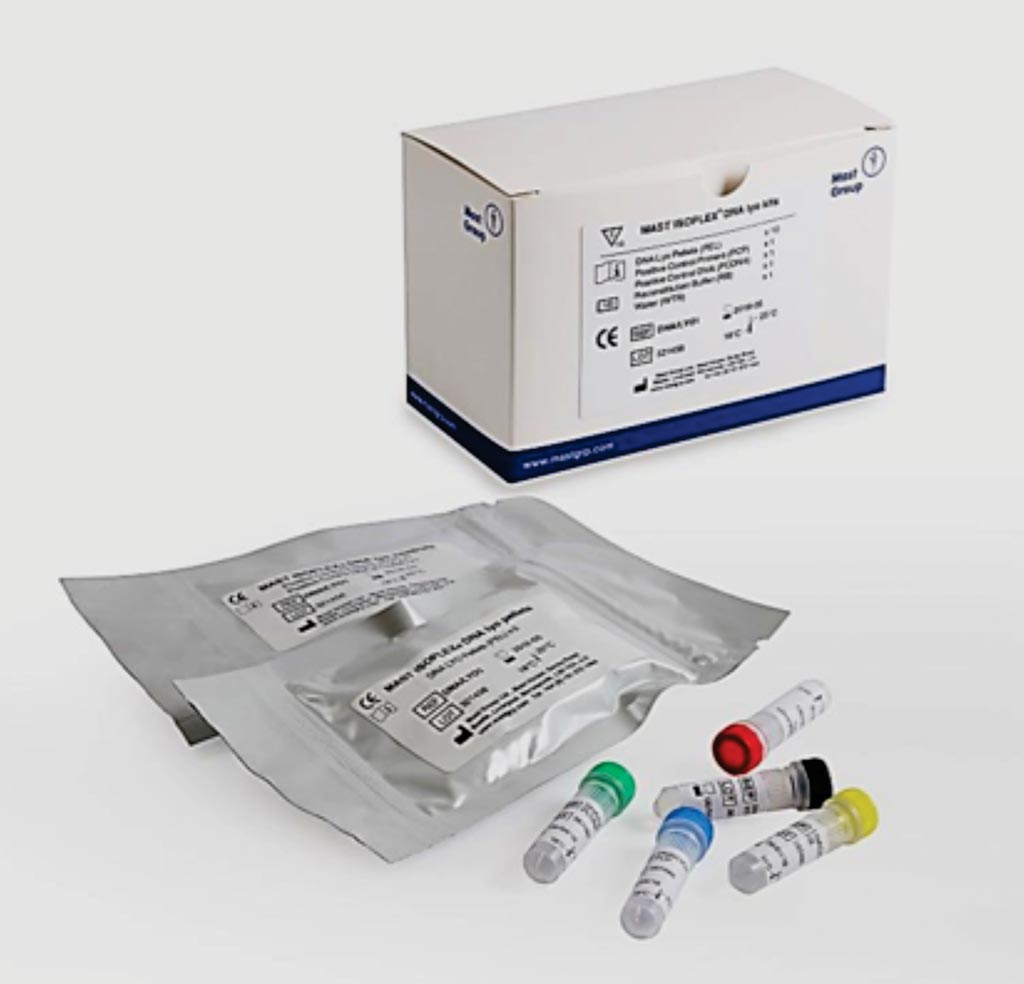Treponemal Subspecies Discriminated by LAMP
By LabMedica International staff writers
Posted on 26 Apr 2018
Human yaws is a tropical skin disease of children caused by the bacterium Treponema pallidum subsp. pertenue (TPE). Skin ulcers are the most characteristic clinical manifestations associated with infection in all three active disease stages, primary, secondary, and tertiary yaws.Posted on 26 Apr 2018
Although it is possible to distinguish current infection, active or latent, from past infection when non-treponemal and treponemal tests are used in combination, it remains impossible based on serology and in some instances clinical manifestations, to differentiate yaws infection (TPE) from syphilis, caused by subsp. pallidum (TPA) or bejel, caused by the subsp. endemicum (TEN).

Image: The MAST ISOPLEX DNA kit is a ready to use amplification kit, making molecular diagnostics with LAMP easy and efficient (Photo courtesy of Mast Diagnostica).
A team of scientists working with the Institute for Primate Research (Göttingen, Germany) used loop-mediated isothermal amplification (LAMP) assays to rapidly differentiate infection with any of the three Treponema pallidum subspecies (pallidum (TPA), pertenue (TPE), and endemicum (TEN)) and which are known to infect humans and nonhuman primates (NHPs). Four TPA, six human, and two NHP TPE strains, as well as two human TEN strains were used to establish and validate the LAMP assays.
Three different LAMP assays were designed. First, the team generated a LAMP assay that is able to detect DNA of all three TP subspecies (TPA, TPE, and TEN). Another LAMP assay was designed to distinguish TPE strain infection from infection with TPA or TEN strains. A third LAMP assay that differentiates between infection with TPE or TEN and infection with TPA strains was established. LAMP reactions were performed using the Mast Isoplex DNA Kit. All reactions were run on a MircoAmp Fast Optical 96-well reaction plate.
The scientists reported that all three LAMP assays were highly specific for the target DNA. Amplification was rapid from 5 to 15 minutes, and within a range of 10E+6 to 10E+2 of target DNA molecules. Performance in non-human primate (NHP) clinical samples was similar to the one seen in human TPE strains. The LAMP assay targeting the gene was positive for all tested TP strain samples including the four TPA, six human TPE, two simian TPE, and the two human TEN strains. The LAMP assay that uses a part of the TP_0619 gene generated positive results for all TPE strains including simian TPE strains as well as the two human TEN strains.
The authors concluded that the newly designed LAMP assays provide proof of concept for a diagnostic tool that enhances yaws clinical diagnosis. It is highly specific for the target DNA and does not require expensive laboratory equipment. Test results can potentially be interpreted with the naked eye, which makes it suitable for the use in remote clinical settings. The study was published on April 12, 2018, in the journal Public Library of Science Neglected Tropical Diseases.
Related Links:
Institute for Primate Research













